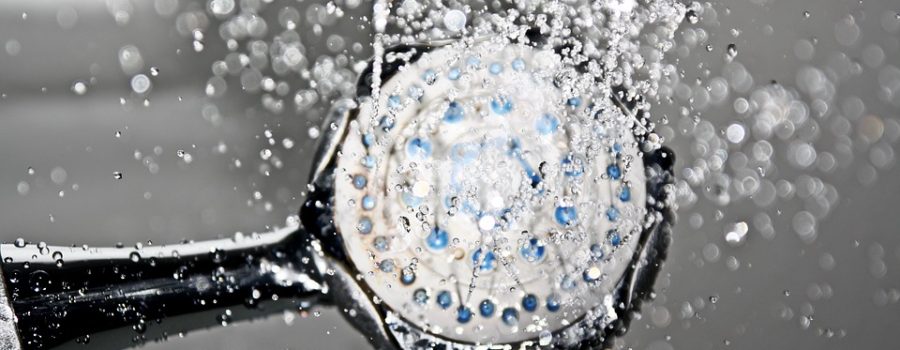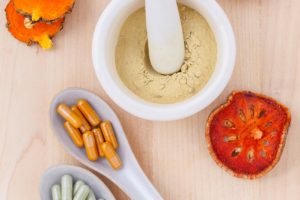Are you ready to get out of your comfort zone in order to improve your health? I hope so because in this article I explain why you should take cold showers. Yes, I am suggesting that you deliberately expose yourself to cold water on a daily basis. Perhaps you think I’m crazy, and that’s okay. I don’t blame you. This is similar to other people who call me cold-blooded, or others who call me nuts, but I say that they’re all just missing out.
I have been taking cold showers for around 2 years now, and I enjoy nearly all of them. The concept of a cold shower may seem daunting at first, but it really isn’t that difficult, especially once you get used to it. Truly, this practice can be done by everyone, as long as one stays consistent and gradually works into it.
But I’m sure you’re wondering why you should do it in the first place; and to answer this, it is helpful to turn to an understanding of physiology, as well as to explain the numerous research-backed benefits observed in scientific studies. And it is my hope that you will be both surprised and intrigued by these benefits, and that you will start to incorporate this practice into your own daily life.
Physiological Effects
Cold exposure has very interesting effects on the body. First, it results in vasoconstriction, which leads to blood being drawn away from the skin in order to conserve heat. In turn, more blood flows toward the brain and other vital organs (Hassan, Wagas, Yaqus, & Asad, 2017). Furthermore, cold exposure activates the sympathetic nervous system and increases beta-endorphins and noradrenaline in the brain (Shevchuk, 2008). Essentially, cold exposure acts as a minor stressor to the body, which promotes low-level fight-or-flight responses that occur very similarly to other stressors, and which are also associated with various health benefits (more on that later). The key here, though, is that it is a minor stressor, which is good for the body. Mild amounts of stress are essential for human health, whereas excessive stress is detrimental.
Physical Benefits
There are a number of benefits of cold exposure for human health; both physical and psychological. In regard to physical health, cold exposure may be an effective way to lose body fat. Exposure to cold temperatures results in increased energy expenditure and increased metabolism. Furthermore, cold exposure leads to the recruitment of brown adipose tissue (brown fat) which directly uses body fat for fuel (Saito, Yoneshiro, & Matsushita, 2016). Thus, cold exposure is a potential way to help one lose body fat (Ouellet, et al., 2012; Saito, et al., 2016). However, research is not fully conclusive on this yet, and it is important to remember that successful and healthy weight loss results from a combination of factors, including a healthy diet, adequate exercise, hormonal balance, and so forth.
Cold exposure can also improve cardiovascular health. Mainly, cold exposure initially increases heart rate and blood pressure, which enhances circulation (Bleakley & Davison, 2010). The blood is drawn away from the skin, and is directed towards all of the vital organs, which means your heart has to work harder to pump all of that blood towards the vital organs (Hassan, et al., 2017). So, brief periods of cold exposure over time can make your heart more efficient and can improve blood flow. Improved circulation, in turn, can lead to many of its own health benefits, such as a decreased risk for cardiovascular disease, enhanced mental functioning, and improved metabolism.
The immune system may also benefit from cold exposure. I know, this is perhaps contrary to what you’ve been told (e.g. being out in the cold will make you sick!). Though, in reality, brief cold exposure increases the body’s number of white blood cells and natural killer cells, and is overall a significant way to enhance the immune system (Brenner, et al., 1999). However, remember that it is brief cold exposure that is beneficial. Thus, a quick cold shower will help the immune system, but really long cold showers or extended periods of time in the cold weather will likely not have the same effect, and may even be detrimental.
Another benefit of cold exposure is that it can reduce pain and inflammation (Dupuy, Deuzi, Theurot, Bosquet, & Dugue, 2018); Hinkka, Vaatanen, Ala-Peijari, & Numni, 2017). This is partially because the reduced blood flow minimizes swelling and other inflammatory-related factors (Dupuy, et al., 2018), and because of the release of endorphins, which activate opiate receptors in the brain to reduce feelings of pain. This is perhaps not too surprising since you are probably familiar with using ice-packs or other cold implements when various parts of your body are inflamed, injured, or otherwise painful. In a similar way, cold showers reduce whole-body inflammation, soreness, and pain; therefore acting as a more efficient and potent pain-reliever.
Psychological Benefits
There are also many benefits of cold therapy with regard to psychological health. The psychological benefits are perhaps even more exciting and interesting, particularly because they are not as expected as the physical benefits. Maybe I’m biased with my psychology background, but I think the psychological benefits are the best!
Recall that, when exposed to the cold, more blood flows to the brain, and this simultaneously results in increased endorphin production (Hassan, et al., 2017), which in turn activate the opiate receptors, which can help to improve mood. Furthermore, cold exposure enhances the delivery of electrical impulses to the brain (Shevchuk, 2008a) and also may result in increased dopamine levels (Shevchuk, 2008b). Together, the combination of increased blood flow, endorphins, dopamine, and increased electrical impulses may have powerful anti-depressive effects (Hassan, et al., 2017; Shevchuk, 2008a). The enhanced electrical activity is actually very similar to what occurs during electroconvulsive therapy for depression, just without all of the potential side effects. Thus, cold showers can be an easy way to mitigate depression or low-moods (keeping in mind that depression is not synonymous with a low or bad mood, but rather entails much more serious symptoms). I’m not saying that it is a cure on its own, especially for more severe symptoms, but it is a powerful tool in addition to other factors for overcoming depression and similar symptoms or feelings. So, perhaps instead of turning to drugs, junk food, or scrolling through social media to deal with low moods, cold showers can be a very healthy alternative.
Continuing with the psychological benefits, cold exposure can also enhance alertness and attention. This may not come as a surprise, especially, for example, if you’ve ever jumped into a cold lake, pool, or if you’ve participated in the ice-bucket challenge. You get an immediate rush of energy or a shock throughout the body. This happens because cold exposure activates the sympathetic nervous system, which increases adrenaline and noradrenaline(Mooventhan & Nivethitha, 2014); and because cold exposure increases blood flow to the brain (Hassan, et al., 2017). Together, all of this increases brain function and can enhance alertness and attention. Cold showers, therefore, can be a great way to start your day. You may even find that cold showers can replace your morning cup of coffee, especially when combined with other energizing techniques, such as deep breathing.
On a personal note, I can attest to these psychological benefits. Sure, it seems uncomfortable initially, but after I’m done, I have increased energy and a general sense of well-being. It is kind of hard to describe but simply put, I just feel good. It truly is a natural high, similar to the one I’ve talked about with the Wim Hof deep breathing method.
Implementation
While there are many benefits to cold showers, these will only be maximized if you stay consistent with them. Thus, there are a few points that can help you adapt to the process, which should increase the likelihood that you’ll stay consistent. After all, you won’t stick to this if you don’t enjoy it; but if you follow these tips you should be more likely to benefit from it.
First, keep the water on a warm setting for a couple of minutes. Yes, for the first couple of minutes, you will shower like everyone else. After these couple of minutes, start to turn the water to a moderately cold setting. This is subjective, but it should be less than 65 degrees, preferably lower than 55 degrees). But, don’t expose your whole body to the cold shower right away! This is the key. Initially, just expose your hands and feet to the cold water. Then, gradually increase the amount of cold water that touches your body. Start with the hands and feet, then gradually cover the arms, legs, shoulders, and eventually the back and chest, and the whole body. Also, make sure to breathe calmly, in and out through the nose. It is a natural reaction for the breath to shorten when exposed to the cold. So, be sure to actively breathe calmly and deeply in order to adjust more easily. Doing all of this will help you to gradually adjust to the change in temperature, which makes it much less stressful.
Finally, the last step is to enjoy it! At this point, you will be surprised at how easy it is to stay in the cold, and you will very likely have increased feelings of well-being and alertness. One last point is that, over time, you can try to use colder temperatures, and eventually you’ll get to the point where you have the handle on the lowest setting. But don’t worry about that for now; the key is to use a temperature you can tolerate; one that creates a minor stress on the body.
Key Points Before Starting
Lastly, there are a few points of caution and/or consideration before implementing cold showers or other forms of cold exposure. First, cold showers should not be used when sick. While cold showers are potentially beneficial for the immune system, taking these when you’re already sick puts too much stress on the body, which could lead to increased sickness. In a similar manner, you do not want to take cold showers as often, or as cold, if you have a lot of other stress in your life. Just listen to your body; if there are days when you just cannot seem to adapt to the cold shower, then don’t try to force it. It is probably a sign that you need to reduce stress in your life.
Also, cold showers should not be taken by those with heart problems. The resulting changes in blood pressure and heart rate may not be safe for those with various cardiovascular diseases, such as high blood pressure, coronary artery disease, or congestive heart failure. If you have even the slightest concerns about the effects of cold showers on your health, be sure to discuss it with your doctor.
Another point is that these showers can be taken at any time of the day; yes, even at night. In the morning, they can be used to boost alertness and energy. And, at night, they can be used to help lower body temperature, which is beneficial before sleep. Don’t take them right before bed though; at least an hour before bed is a good guideline. Otherwise, you might be too alert before bed.
The last point to consider is that you need to be aware of how the shower affects you personally. If you remain cold for over 30 minutes after you are done, then the temperature was too cold. You want a temperature that is what I call “comfortably cold”, and the feelings of cold should dissipate fairly quickly after the shower is over.
Reap the Benefits
With these points in mind, I strongly encourage you to start taking cold showers. The brief period of minor stress is well-worth the benefits gained, both physical and psychological. Moreover, the evidence is only growing as scientists, researchers, and health practitioners are starting to understand the importance of incorporating natural and uncommon elements into healing practices.
Plus, by doing this, you are succeeding at something you may not have thought was possible before, and you will likely increase your self-discipline, will-power, and the general ability to handle stress. In turn, all of these can have carry-over effects on other aspects of your life, such as trying to lose weight. So, get out of your comfort zone and try these out for yourself! It’s at least worth a shot.
References
Bleakley, C. M., & Davison, G. W. (2010). What is the biochemical and physiological rationale for using cold-water immersion in sports recovery? A systematic review. British Journal of Sports Medicine, 44(3), 179-187. http://dx.doi.org/10.1136/bjsm.2009.065565
Brenner, I. K. M., Castellani, J. W., Gabaree, C., Young, A. J., Zamecnik, J., Shephard, R. J., & Shek, P. N. (1999). Immune changes in humans during cold exposure: Effects of prior heating and exercise. Journal of Applied Physiology, 87(2), 699-710.
Dupuy, O., Douzi, W., Theurot, D., Bosquet, L., & Dugué, B. (2018). An evidence-based approach for choosing post-exercise recovery techniques to reduce markers of muscle damage, soreness, fatigue, and inflammation: A systematic review with meta-analysis. Frontiers in Physiology, 9, 403. https://doi.org/10.3389/fphys.2018.00403
Hassan, S. Z., Waqas, M., Yaqub, D., & Asad, D. (2016). Hydrotherapy: An efficient and cost-effective treatment for depression. International Journal of Community Medicine and Public Health, 4(1), 274. http://dx.doi.org/10.18203/2394-6040.ijcmph20164752
Hinkka, H., Väättänen, S., Ala-Peijari, S., & Nummi, T. (2017). Effects of cold mist shower on patients with inflammatory arthritis: a crossover controlled clinical trial. Scandinavian Journal of Rheumatology, 46(3), 206-209. https://doi.org/10.1080/03009742.2016.1199733
Mooventhan, A., & Nivethitha, L. (2014). Scientific evidence-based effects of hydrotherapy on various systems of the body. North American Journal of Medical Sciences, 6(5), 199–209. https://doi.org/10.4103/1947-2714.132935
Ouellet, V., Labbé, S. M., Blondin, D. P., Phoenix, S., Guérin, B., Haman, F., Turcotte, E. E., Richard, D., & Carpentier, A. C. (2012). Brown adipose tissue oxidative metabolism contributes to energy expenditure during acute cold exposure in humans. The Journal of Clinical Investigation, 122(2), 545–552. https://doi.org/10.1172/JCI60433
Saito, M., Yoneshiro, T., & Matsushita, M. (2016). Activation and recruitment of brown adipose tissue by cold exposure and food ingredients in humans. Best practice & research Clinical endocrinology & metabolism, 30(4), 537-547. https://doi.org/10.1016/j.beem.2016.08.003
Shevchuk, N. A. (2008a). Adapted cold shower as a potential treatment for depression. Medical Hypotheses, 70(5), 995-1001. https://doi.org/10.1016/j.mehy.2007.04.052
Shevchuk, N. A. (2008b). Hydrotherapy as a possible neuroleptic and sedative treatment. Medical Hypotheses, 70(2), 230-238. https://doi.org/10.1016/j.mehy.2007.05.028




